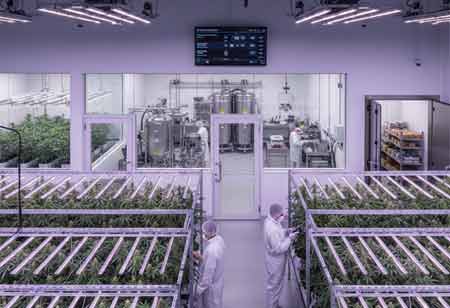Thank you for Subscribing to Cannabis Business Insights Weekly Brief
Emerging Technologies in Cannabis Extraction
The future of cannabis extraction focuses on advanced methods, terpene preservation, cannabinoid diversification, automation, sustainability, and environmental efficiency.

By
Cannabis Business Insights | Friday, May 09, 2025
Stay ahead of the industry with exclusive feature stories on the top companies, expert insights and the latest news delivered straight to your inbox. Subscribe today.
Fremont, CA: The prospects for cannabis extraction are promising, fueled by various emerging technologies, shifting consumer preferences, and evolving regulations. Innovations in extraction techniques, a heightened emphasis on terpene profiles, diversification of cannabinoids, sustainability initiatives, and automation will propel the industry into the future.
Traditional methods like butane hash oil extraction and CO2 extraction have long been staples in the cannabis industry. Methods like rosin pressing and ice water hash extraction have gained traction for their purity and the absence of residual solvents. In solventless extraction, mechanical pressure or cold temperatures extract cannabinoids and terpenes, offering a cleaner product. This trend toward solvent-free concentrates is expected to rise, particularly as consumers become more conscious of product purity.
Supercritical CO2 extraction is already one of the most efficient and widely used methods, but advancements in SFE will yield even higher-quality cannabis extracts. Researchers focus on improving efficiency, reducing costs, and extracting a wider range of beneficial compounds beyond cannabinoids and terpenes, such as flavonoids and other plant-based compounds.
Terpenes, aromatic compounds responsible for cannabis's distinct scents and flavors, are now being recognized for their therapeutic potential. Future extraction techniques will strongly emphasize terpene preservation and profile optimization.
The demand for full-spectrum extracts, which retain a broad range of cannabinoids and terpenes, is rising. Consumers are increasingly seeking products that provide the entourage effect. Advances in extraction will allow producers to capture more complex terpene profiles while preserving delicate flavors.
The cannabis industry is shifting toward more efficient, automated processes to meet the increasing demand for high-quality products. Automation will improve consistency, speed, and scalability, addressing the challenges of high labor costs and production efficiency that many extraction labs face.
Automation in extraction involves robotics and smart technologies that streamline the extraction process, reduce human error, and enhance the precision of the product. For example, robotic systems that handle everything from plant material loading to post-processing are being developed to make extraction facilities more efficient and scalable.
There is increasing interest in extracting and utilizing a broader range of cannabinoids and terpenes beyond just THC and CBD. Future cannabis extraction techniques will need to focus on unlocking the potential of lesser-known cannabinoids, such as CBG, CBN, THCV, and CBC, which are believed to have specific therapeutic properties. These cannabinoids are supposed to offer unique benefits, such as anti-inflammatory effects, sleep aids, and appetite regulation. Future extraction methods must target these compounds, isolating and concentrating them efficiently.
As cannabis extraction grows, so does its environmental impact. The industry is more likely to adopt more sustainable practices in response to concerns about energy consumption, waste, and the use of chemicals.
Extraction processes, especially those that rely on solvents or cryogenic methods, can be energy-intensive. The future will see more energy-efficient technologies that reduce power consumption and decrease extraction facilities' carbon footprint. Cannabis extraction generates significant waste, including plant material, solvents, and packaging. There will be more emphasis on recycling and waste-reduction strategies. For example, companies are already exploring ways to repurpose spent biomass as animal feed or compost.






